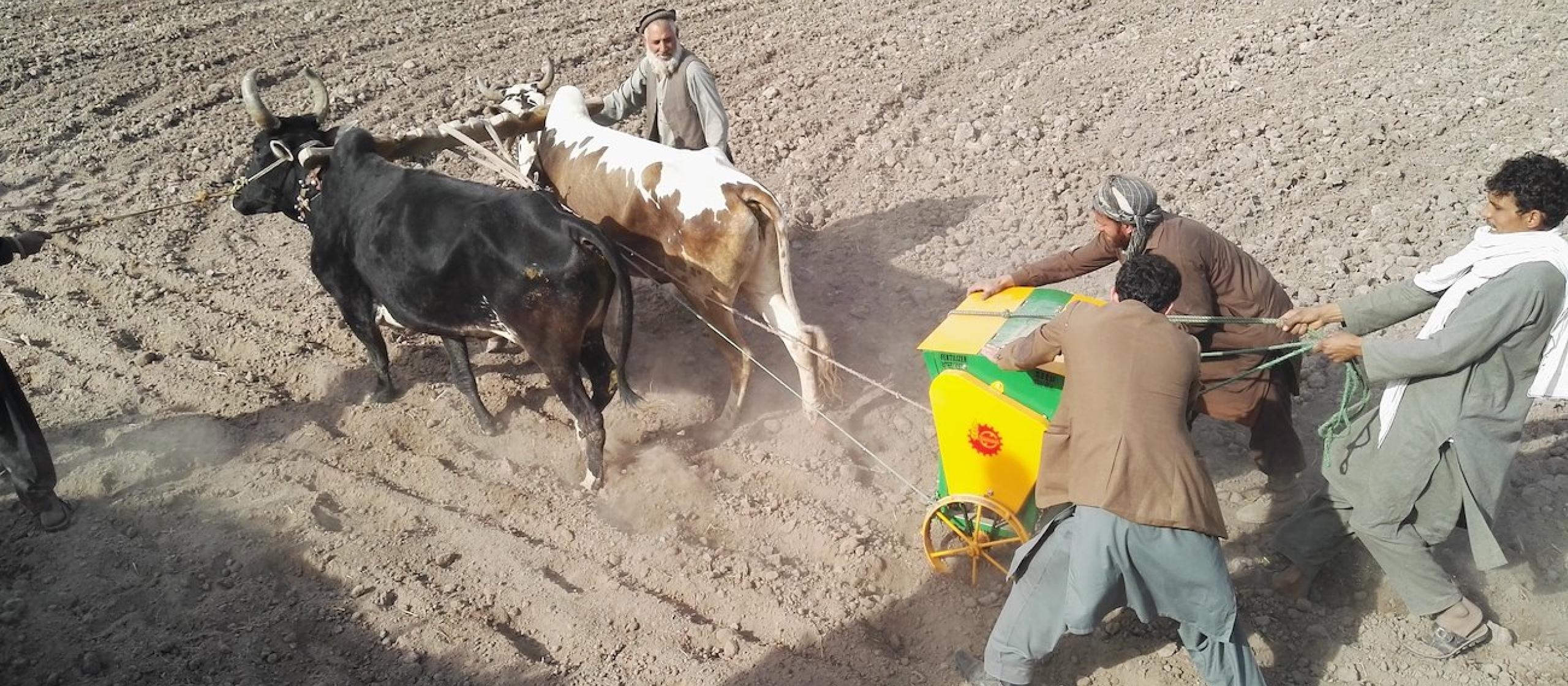- HomeHome
-
About ACIAR
- Our work
- Our people
-
Corporate information
- ACIAR Audit Committee
- Commission for International Agricultural Research
- Policy Advisory Council
- Agency reviews
- Executive remuneration disclosure
- Freedom of information (FOI)
- Gifts and benefits register
- Information publication scheme
- List of new agency files
- Contracts
- Legal services expenditure
- Privacy impact assessment register
- Commonwealth Child Safe Framework
- Benefits to Australia
- Careers
- 40 years of ACIAR
-
What we do
- Programs
- Cross-cutting areas
- Resources
- Where we work
-
Funding
- Research projects
- Fellowships
-
Scholarships
- John Allwright FellowshipScholarships to study in Australia for ACIAR partner country scientists to have Australian postgraduate qualifications
- ACIAR Pacific Agriculture Scholarships and Support and Climate Resilience Program
- Alumni Research Support Facility
- Publications
- News and Outreach
Date released
19 April 2018
Food security is ‘when all people, at all times, have physical, social and economic access to sufficient, safe and nutritious food that meets their dietary needs and food preferences for an active and healthy life’ (Food and Agriculture Organization). It has been at the heart of almost all of ACIAR’s work worldwide for decades, exemplified perhaps in efforts to establish security in food when it is missing in every other area of life.
In addition to the common challenges of climate change, soil degradation, lack of resources or education, the highly volatile conditions of working in war-torn Afghanistan require a level of commitment that is integral to ACIAR’s reputation abroad.
In a drought-affected country with one of the highest per capita wheat consumptions in the world, where approximately 80% of the population depends on agriculture and related activities to survive, Afghanistan is reaping the benefits of ACIAR’s ongoing work with modern wheat varieties.
In 2012 an ACIAR project (CIM-2011-026) was implemented by the International Maize and Wheat Improvement Centre (CIMMYT) with funding of $6.4 m; this builds on several years of researchand continues to evaluate the suitability of high-yielding wheat and maize varieties for Afghan conditions and farming systems.
The five-year project aimed at providing high-yielding varieties for the dry conditions and ensuring new wheat varieties are resistant to wheat rust diseases, especially the threatening stem rust strain Ug99 and the widespread yellow (stripe) rust.
Laying the groundwork
Past ACIAR projects laid the foundations for the current research: ‘Stress tolerant wheat and maize for Afghanistan: “Seeds of Strength”’ (SMCN-2002-028), ‘Wheat and maize productivity improvement in Afghanistan’ (CIM-2004-002) and ‘Sustainable wheat and maize production in Afghanistan’ (CIM-2007-065).
In collaboration with the Agricultural Research Institute of Afghanistan (ARIA), the most recent project (CIM-2011-026) organised country-wide yield and disease resistance evaluation trials of wheat and maize lines obtained by CIMMYT in its global breeding programs. The most promising varieties were released for commercial cultivation, while experiments in crop production management have also helped to improve production practices.
A key achievement has been to strengthen the capacity of ARIA researchers. With ARIA’s facilities damaged during the instability in the 1990s, CIMMYT project staff plan and execute all project experiments together with ARIA researchers. ARIA researchers have also been trained in-country and abroad on research topics relevant to wheat and maize improvement and production.
Trials yield successes
‘Since 2012, the start of the most recent phase of ACIAR-funded work, Afghan partners have developed and released 12 high-yielding and disease-resistant bread wheat varieties, as well as three varieties of durum wheat, two of barley and three of maize,’ says Dr Rajiv Sharma, a senior wheat scientist at CIMMYT, speaking at a partners’ workshop in 2017.
‘A total of 9,000 wheat and maize lines introduced for testing in Afghanistan since 2012 came from the work of breeders from CIMMYT and from the International Winter Wheat Improvement Program based in Turkey,’ Dr Sharma added.
New wheat varieties released for commercial cultivation have shown average yield superiority ranging from nine to twenty-seven percent over current commercial cultivars under irrigated conditions and from 10 to 40% under rain-fed conditions at research farms. Yields obtained on farmers’ fields ranged from 3.6 to 5.8 tonnes per hectare, compared to farmer practice averages of 2.3 to 3.9 t/ha under irrigated conditions. The figures under rain-fed conditions stood at 0.58 to 1.2 for CIMMYT demonstrations as against 0.38 to 0.8 for farmer practices. Production practices have similarly improved, with line sowing of wheat shown to increase yields by up to 20 per cent in demonstration plots managed by farmers as compared to the standard practice of broadcasting seeds.
The wheat line stested by the project include varieties enriched in micronutrients such as zinc. If found suitable, the adoption of these lines could improve the nutritional status of Afghan women and men farmers and their children. The project has also delineated wheat agro-climatic zones, characterised Afghanistan’s wheat genetic resource collection, and provided training abroad for 64 Afghan researchers and in-country for 4,000. In direct partnership with farmers, there have also been more than 1,800 farmer field demonstrations, 80 field days, and machinery such as seed drills and mobile seed cleaners introduced.
Results in 2018 are testament to the project’s effectiveness: six new wheat varieties have been released, trials of 39 sets of wheat and maize lines were conducted on ARIA research stations at 12 locations, and 540 farmer field demonstrations were conducted in four provinces. An estimated 600,000 farmers have benefited from the new improved varieties. Capacity-building efforts have enabled ARIA to assume a leadership role in conducting and managing yield evaluation trials, and CIMMYT providing mentoring and technical assistance.
Key points
- Partnering with CIMMYT, six new wheat varieties have been introduced, with an estimated 600,000 farmers likely to benefit.
- High-yielding wheat varieties have improved production by up to 40%.
- Improved production practices have increased production by up to 20%.



